Help isn’t just a text away (yet)
October 23, 2014
“Make a voice call to 911 for help; text to 911 is not available.”
That automated message isn’t what you want to receive during an emergency, when seconds count. But for now, that’s what people in Los Angeles County get when they send a text to 911.
That could be changing with the advent of new systems—called “text-to-911” and “Next Generation 911”—which would allow people to send texts, and eventually pictures and videos, directly to emergency dispatchers. On Tuesday, acting on a motion by Supervisor Don Knabe, the Board of Supervisors directed the county’s Chief Executive Office to explore ways of implementing the new technology.
The ability to receive photos and video could make a big difference for public safety workers, helping solve crimes and potentially saving lives, said Lieutenant Antonio Leon, who manages the Sheriff’s Department data network.
“The dispatcher would look at it and provide information to deputies in the field,” Leon said. For example, if a robbery has occurred and officers have a basic description of the suspect, “a video can corroborate that and provide additional information like height, facial hair or a unique item of clothing.”
And in the case of an active shooter situation, he said, law enforcement could get a head start on sizing up the situation and coordinating resources accordingly.
“Right now if something like a school shooting happens you’ll see people post things to social media, but it doesn’t become available [to authorities] until a long time after,” Leon said. Someone who now posts a photo to Twitter or Facebook could in the future send those images directly to a dispatcher, along with data indicating where it was taken. “Maybe there are people that are injured. Now you know you’re going to need medical resources ready to go, or maybe you just have to send the SWAT team in right away instead of waiting.”
Basic text-to-911 “should be capable of deploying in short order,” Leon said. But Next Generation 911—which goes beyond basic texting to include photos and videos, and the ability to pinpoint a user’s location via GPS— won’t be available until further down the road. First, the Sheriff’s Department and other first responder agencies must upgrade their technology. Another obstacle is funding, since local governments’ emergency call center equipment is provided by the Governor’s Office of Emergency Services. Karen Wong, the agency’s assistant director for public safety communications, said Next Generation 911 could be available statewide within five years—but only if funds can be found to make it happen.
Consumers’ increasing reliance on texting and communicating with smartphones has, ironically, dried up the state’s main source of funding for the program—fees attached to long distance calls from land lines. “The state account does not have enough money and it is actually depleting because it is based on interstate calls in California,” Wong said.
California’s program is part of a national effort being coordinated by the Federal Communications Commission. On August 8, the agency adopted an order requiring all text messaging providers to deliver emergency texts to any public safety agency that requests them. So far, a few dozen agencies in 12 states have launched text-to-911 and about 15 agencies have switched to full Next Generation 911, Leon said.
Still, most agencies aren’t quite ready to receive text messages, photos or videos just yet.
“If we do this right, this thing will be real nice and something we can rely on,” Leon said. “But it’s going to take a lot more work to get it going.”
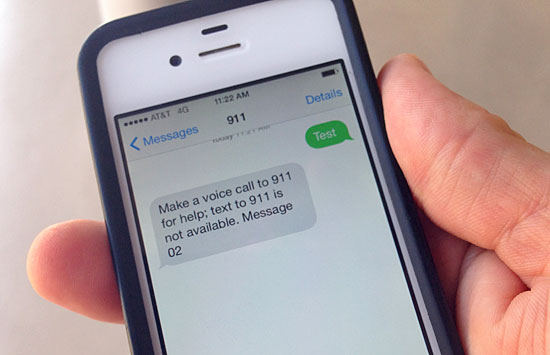
It's not possible yet, but the county is studying ways to enable people to text emergency dispatchers.
Posted 10/23/14
Democracy gets a facelift
October 23, 2014
Envisioning a future that would make the founding fathers proud, Los Angeles County is investing $13.6 million to revolutionize its voting system and possibly set the standard for the rest of the country, too.
After decades of putting up with the clunky InkaVote and its even clunkier predecessors — Votomatic punch cards, anyone? — the Board of Supervisors voted Tuesday to develop a prototype with a touch screen and other high-tech innovations designed to serve the different needs of the county’s nearly 5 million registered voters.
Barring any serious glitches, the new “ballot marking machine” will be field tested in 2017 and mass produced in 2018, in time for the gubernatorial election.
“If this works well in L.A. County, it could be a game changer for the nation,” said Pamela Smith, president of Verified Voting, a nonpartisan organization that advocates election accuracy, transparency and verifiability.
Registrar-Recorder/County Clerk Dean Logan said the machine’s engineering specifications, intellectual property and functional prototypes would be nonproprietary and remain in the public domain.
“From the beginning, we’ve adopted the principle of doing this in a very transparent manner so other jurisdictions can take advantage of the data,” he said.
The project’s first priority is to upgrade the county’s voting system but Logan added, “If we can do that in a way that is transferrable to other jurisdictions, that can advance voting systems across the country, it would be icing on the cake.”
It may not have a catchy name, but the proposed new voting system is state-of-the-art, sophisticated and intuitive.
The touch screen can be customized to display foreign languages, larger fonts and high-contrast backgrounds. Voters can also select candidates by pressing buttons on an attached handheld device.
Other advanced features include the ability to process voice command and to “read” interactive sample ballots on smartphones. Voters would simply hold their smartphones over the scanner, and the names of their pre-selected candidates would appear on the touch screen to be printed on the official ballot.
The machine also would allow ballots to be cast in conveniently located “voting centers” over an extended period of time, instead of in a specific polling place and only on Election Day. It would print the names of the candidates on the ballot, so poll workers would not have to interpret marks like on the InkaVote.
“This is a critical needs project because the environment and demands under which the county administers elections have become increasingly complex, challenged by a growing and diverse electorate, an aging voting system, and a fluid regulatory environment that has limited the development of voting systems,” Logan said.
InkaVote has been in use only since 2003 but its vote-counting system was based on a program developed in 1968—that’s 46 years ago, when the Vietnam War was still raging, Lyndon Johnson was in the White House and the original Star Trek was on the television.
“It has become increasingly difficult for the registrar/recorder to source replacement hardware, as well as for staff to support its outdated technology,” said a recent analysis by county Chief Information Officer Richard Sanchez. “(And) the lack of system flexibility places the county at risk of noncompliance of election requirements.”
The county launched the Voting Systems Assessment Project in 2009 and began consulting with technology, security and elections experts, as well as different kinds of voters to determine what upgrades were necessary.
When none of the existing off-the-shelf voting systems were found capable of meeting the county’s complex needs, the prominent design and innovation consultancy firm IDEO was recruited to develop a prototype.
The firm’s name may not be familiar to most but its work certainly is. IDEO helped design Apple’s first computer mouse, Crest’s standup toothpaste tube, and TiVo’s thumbs up and thumbs down buttons.
IDEO Director Blaise Bertrand said he hopes the “human centered design” of the new voting system will boost turnout at the polls.
“We tried to improve the voter experience by understanding the voters’ needs and providing a solid technology platform,” he said. “We hope it will make people more engaged.”
Still, not everyone was impressed by the changes. David Holtzman, founder of Los Angeles Voters for Instant Runoff Elections, sought to delay the project. “There’s no pressing need now for a new system,” he told the board, “unless you want to provide for improved election methods like using ranked choice voting to have instant runoff elections.”
Ranked choice voting would allow voters in a primary election to identify their favorite candidates in order of preference, which would eliminate the need for a runoff election.
Given the rapid pace of technological advances, there are worries the new voting machines would be rendered obsolete when, say, online voting becomes a reality. Logan, however, believes that may be years or even decades away
“In order to have a truly online or paperless voting system, you have to get over the barrier of the secret ballot,” he explained.
“When you bank online, for example, and somebody hacks into the system, it can be corrected because you and the bank both know what should be in the account,” he added. “With voting, it doesn’t work that way. Once you put that ballot into the ballot box, we’re not supposed to know your identity, so tracking mistakes would be difficult.”
Smith said the importance of having secured voting systems cannot be overstated.
“It’s participation in our democracy, the peaceful transfer of power,” she said. “To have an obscure, opaque voting system that nobody understands just doesn’t make sense.”
“Voting systems need features that would provide us with justifiable confidence that election outcomes are correct,” she added. “It’s not enough for those running the elections to say, ‘Just trust us, it’s working.’ ”
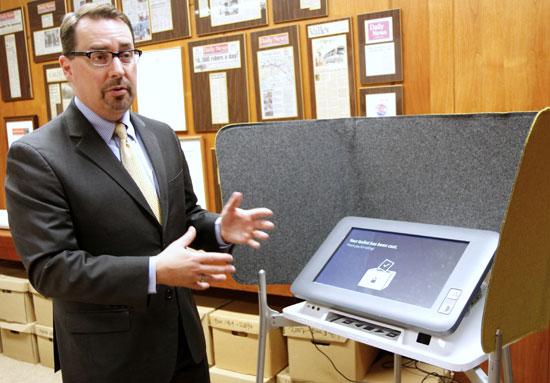
Registrar-Recorder Dean Logan says the new system will help the county deal with an increasingly complex electorate.
Posted 10/23/14
New recruits in war on flu
October 23, 2014
It’s a scary, potentially deadly communicable disease, and it could be coming soon to your neighborhood, school or workplace.
But unlike Ebola, which has been commanding worldwide media attention in recent weeks, influenza can be prevented with an effective, widely-available tool that you can get even at the corner drug store or supermarket.
We’re talking, of course, about the good old annual flu shot—which is being promoted in more varieties than ever this year, from nasal spray for kids to high dosages for seniors to vaccines that include an extra strain of virus for good measure.
With Ebola fears running high, county Department of Public Health officials are making a special push to persuade people to get immunized early in the season—whichever type of vaccination they choose—so that they don’t come down with the flu. Since flu can have some Ebola-like symptoms (including fever) it makes sense to minimize the number of people who get it and then head to the emergency room fearing the worst.
In other words, flu vaccinations may be an easier sell this season than they have been in years past.
The Ebola situation has created a “teachable moment,” said Michelle Parra, the director of Public Health’s immunization program. She said it is a chance to drive home the message that flu can be serious and even fatal, especially to those with underlying medical conditions or overall frail health.
Ebola has killed thousands in Africa, but at this point only two people are believed to have contracted the disease in the United States—both of them nurses who treated Thomas Eric Duncan, who was infected with the disease in Liberia and later died from it at a hospital in Texas. Flu, on the other hand, claims the lives of tens of thousands of Americans each year—up to 49,000 annually, according to the Centers for Disease Control. Those stricken include the 105 Los Angeles County residents—101 adults and four children— who died during the last flu season in 2013-14. That was the highest death toll in the county since the H1N1 pandemic of 2009-10, when 127 died.
No deaths and only “sporadic” flu activity have been reported to L.A. County so far this season, which officially runs from November 1 to March 31. But the county Department of Public Health emphasizes that it’s important to get the vaccine early, since it takes about two weeks to take full effect against flu viruses.
While the overall message is to get the vaccine, period, and as soon as possible, a number of new choices have been cropping up—giving consumers a robust array of options to talk over with their health care providers.
One is the first official recommendation that children aged 2 to 8 get nasal spray instead of a shot, unless they have a condition like asthma. The nasal mist also can be given to adults up to the age of 49.
Then there’s the high-dose vaccine for people 65 and over, which, according to a study recently reported in the New England Journal of Medicine, offers more protection for seniors than the traditional vaccine.
Finally, for the second year in a row, there are two different kinds of vaccine blends on the market—one containing three strains of viruses that cause the flu, the other made up of four.
While that’s good news overall (it indicates that manufacturers are becoming increasingly responsive to flu viruses circulating in other parts of the world before they reach the U.S.) it does present a bit of a communications quandary for health officials, according to L.J.Tan, chief strategy officer for the nonprofit Immunization Action Coalition.
That’s because the four-strain, or quadrivalent, vaccine accounts for only about half of the available vaccine. The CDC estimates that 76 million doses of the quadrivalent will be produced this season, while the rest of the 151 to 156 million doses that make up the nation’s total supply will be three-strain, or trivalent.
“We think it’s most important to get vaccinated [with whichever vaccine is most readily available.] We don’t want people going around saying, ‘Oh, the quadrivalent has four, it’s better, therefore I’m going to wait.’ Because by the time they wait it could be too late,” Tan said. “That’s one of the messaging nuances that we’re trying to figure out and get out there.”
Tan said researchers play a guessing game each year as they try to predict the virus strains heading our way in the coming flu season. The so-called B-strains are generally considered less lethal but are harder to predict, so the quadrivalent vaccine doubles down and includes both. The A-strains, meanwhile, are the most deadly, so both the trivalent and quadivalent vaccines include them—and that’s why health officials say it’s better to get a timely shot than to waste too much time shopping around.
In the midst of this expanding universe of vaccine choices, meanwhile, officials warn consumers not to be sidetracked by claims that flu shots give you the very disease you’re trying to avoid. “Flu shots cannot give you flu,” Public Health’s Parra said. “What happens is a lot of time people already have flu in their system” and wrongly attribute it to the vaccination they just received.
Finally, health experts emphasize that we’re all in this together. Even if you don’t feel personally vulnerable, it’s a good idea to get vaccinated to help those who are more susceptible.
“There’s so many people trying to push different messages, and I do think this idea of ‘Do it for your grandma’ is the one the CDC tries to lead with,” said Tan, of the Immunization Action Coalition. “Protect yourself, protect your family.”
More tips from the county Department of Public Health are here.
Posted 10/23/14
At the ready for Ebola in L.A. County
October 17, 2014
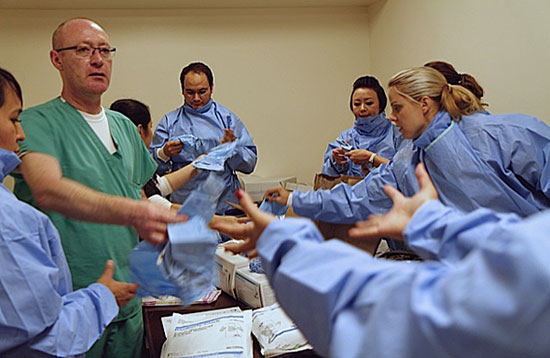
Nurses at LAC+USC hospital this week learn how to protect themselves from Ebola with protective gear.
When LAC+USC Medical Center handed out its latest batch of protective gear against the Ebola virus Wednesday, several emergency room nurses eagerly reached out with both hands.
There were impermeable gowns, scarves, booties, hair coverings, face shields, goggles and gloves – boxes and boxes of them. Still, the offered protections were not enough to ease the anxieties of at least a few of the nurses who’d gathered in the facility’s conference room.
After all, two members of their profession had, stunningly, contracted Ebola in a well-known Dallas hospital while extensively treating a patient who would succumb to the deadly disease.
One of the nurses at the LAC+USC training session, for example, worried whether the back of her neck was still exposed after she’d slipped on her blue gown. A tall, male nurse, meanwhile, wondered what might happen if his large feet tore through his protective booties.
Observing the session was nurse Jason Guzman, 33, who’d already been training for more than a week at the Los Angeles hospital, which is operated by the Department of Health Services. He understood the importance of those questions and concerns because before his training, he had them, too. For with Ebola, even the slightest wardrobe malfunction can lead to infection.
The training, he said, “helped me get more comfortable with the gear. It’s really boosted my confidence. It’s helped me feel a bit better about the situation.”
According to the World Health Organization, the current outbreak of Ebola Virus Disease has infected some 8,900 people, killing about 4,500 of them. That’s more than all other previous Ebola outbreaks combined. Among the casualties: 256 healthcare workers.
Although West Africa remains the epicenter of the disease, the patient in Dallas succumbed after a visit to Liberia, infecting two nurses who’d cared for him.
According to Los Angeles County’s interim health officer, Dr. Jeffrey Gunzenhauser, the nurses’ infections underscore the need for healthcare workers and others to take extreme precautions if they come into contact with a patient who may be contagious.
“I feel personally responsible for their safety,” he said.
Ebola, first discovered in 1976, can cause fatal hemorrhagic fever. A person can get sickened through direct contact with an infected person’s bodily fluids. The first symptom is fever, followed by headache, weakness, diarrhea and severe bleeding.
Gunzenhauser is concerned but calm, even unruffled. That may be because he’s not only a doctor but a retired Army colonel, whose resume includes graduation from West Point, medical training at Walter Reed Army Hospital and drafting health policies for soldiers deploying to the wars in Iraq and Afghanistan. He even learned to parachute out of planes, should that be the only way to reach wounded soldiers on the battlefield.
“Coming out of the military, I’m very accustomed to working in highly stressful operational environments and approaching problems with greatly detailed plans,” he said.
Last week, Gunzenhauser and other county leaders convened a task force to evaluate the response to Ebola if it were to reach Los Angeles. He knows that patients would need more than just medical care.
That’s why beyond medical, emergency and law enforcement agencies, the task force includes such departments as Children and Family Services, Mental Health and Public Social Services.
“Let’s say, for example, we might have a case where we would need to quarantine a family,” he said. “How are they going to get their food? What if they need medications? What if we’re pulling a kid out of school? We need to look at all those contingencies, and plan for them.”
If preparing for Ebola is like mounting a military campaign, then nurse Jason Guzman is among those on the front lines. He feels a “calling” to be a nurse, despite knowing that taking risks is “part of the job description.”
“Nurses are in the field to care for those who need help, and Ebola patients aren’t any different,” Guzman said. “They definitely need care — a little bit more care, perhaps.”
“I just know that if there’s a situation where there’s possibly a patient with Ebola, I’m going to do everything i can to help them,” Guzman said. “I’ll also definitely do everything I can to protect myself.”
Posted 10/17/14
The amazing spider woman
October 17, 2014
Cat Urban is L.A. County’s very own spider woman. You won’t find her swinging from tall buildings to fight crime, but she just might help you feel a little safer at night.
As supervisor of invertebrates at the Natural History Museum, it’s Urban’s job to manage all things creepy and crawly—including the orb-weavers that are currently stretching their spiral-shaped webs across the spider pavilion.
Fear of spiders is said to be the most common phobia in the world (look no further than Halloween decorations and Hollywood movies for confirmation), but Urban says the creatures are misunderstood.
“They don’t want anything to do with us,” Urban says. “They’re more like ‘I’m going to run away from this giant monster that ran into my web.’ ”
The orb-weavers in the pavilion are technically blind, so they can’t see people and they don’t detect them as prey. As a rule, spiders also need to conserve their venom to anesthetize prey—it takes a lot of energy to produce. So it’s a fair bet that they will avoid wasting it by biting humans or other creatures they can’t consume.
On the other hand, the eight-legged creatures are an important part of our ecosystem and the food chain, serving as meals for reptiles, birds and amphibians. And their own dining habits are something to applaud.
“They eat a ton of bugs,” Urban says. “The world would be overrun with flies and mosquitos if we didn’t have orb-weavers; they are essential to our livelihood on the planet.”
That usefulness notwithstanding, people frequently get so creeped out that they have to make an early exit from the pavilion. Even Urban’s older brother is “petrified” of spiders—a major motivating factor behind her interest in the creatures, which began when she was a 12-year-old in Texas.
“There was this special place right across from my house where they were everywhere,” Urban said. “It was this huge community of nephila—they’re the ones that make the big webs that are always right across the path when you’re jogging or biking.”
Urban spent six years at the Smithsonian Institution in Washington, D.C. before moving to Los Angeles. One of the main reasons she came was the spider pavilion, which she said is the only one of its kind in the world.
The pavilion is open daily from 10 a.m. to 5 p.m. until November 2. Entrance is $5 for adults and $3 for children, in addition to general museum admission. Advance reservations are recommended.
Those brave enough to enter will be treated to a dazzling display by hundreds of orb weavers, from the Giant Wood Spider, which builds webs that can measure up to ten feet in diameter, to Golden Silk Spiders, whose yellow webs contain silk that’s as strong as steel. Other arachnids such as tarantulas, wolf spiders and jumping spiders are showcased in a newly-redesigned indoor exhibit adjacent to the pavilion.
Urban and her fellow museum workers will be on hand to educate the public and answer any spider-related questions. Each morning they must adjust the visitors’ path through the pavilion to accommodate new webs that were built overnight, and they also deliver fresh meals like crickets, blowflies and roaches directly to the spiders’ webs.
While Urban has no qualms about letting a spider the size of a bread plate crawl up her arm, she’s not completely fearless—zombies, she says, give her the heebie-jeebies. Which is a much more rational thing to fear, of course.
Posted 10/17/14
Up a tree and loving it
October 16, 2014
Michell Sanchez was only a teenager at the time, but she came of age as an environmentalist when TreePeople first walked onto her high school campus more than a decade ago.
Sanchez was an early—and enthusiastic—participant in Generation Earth, a hands-on environmental education program sponsored by the Los Angeles County Department of Public Works and carried out by TreePeople in local middle schools and high schools since 1998. Funding for the next two years, with renewals possible for 4½ years after that, was approved this week by the Board of Supervisors. The investment—which could total $4.35 million over the life of the current contract—promises results that go well beyond the classroom.
Just ask Sanchez.
Not only did the program inspire her to help lead a team of Grant High School students to launch an on-campus recycling program—and later to create a native plants butterfly garden that still flourishes at the school—but it also influenced what she went on to study in college. (She received her degree in environmental science and policy from Cal State Long Beach.)
Now 25, Sanchez works for TreePeople as a development associate and doesn’t hesitate to sing the praises of the program that got her started.
Generation Earth, she says, left her feeling “empowered and inspired.”
“It really helped guide me to what I wanted to do,” Sanchez says.
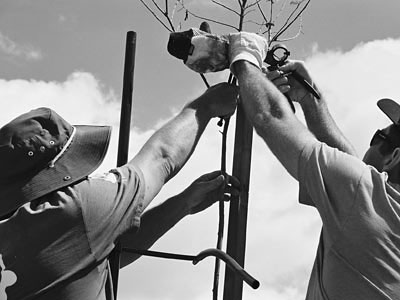
Students strenghten a just-planted tree as part of the Generation Earth program, which has been going strong since 1998.
Sanchez is among the hundreds of thousands of high school and middle school students who have taken part in Generation Earth since the program started. In just the past seven fiscal years, 228,188 students created 2,697 projects at 244 schools.
While Sanchez worked on recycling and gardening, other student endeavors over the years have ranged from e-waste collection events to an urban runoff audit whose results were publicized via social media.
“It’s basically to inspire the students to take personal responsibility about the environment, and then transforming that into action by doing a service-learning project on campus,” says Edna Gandarilla, who manages the program for Public Works.
Some of those actions can have an enduring impact. Diamond Bar students, for example, convinced school district officials to install water-efficient sprinklers at their high school. “They noticed that when the sprinklers were on, they were watering the sidewalks and they were just wasting a lot of water,” Gandarilla says.
Candice Russell, TreePeople’s director of environmental education, says her group’s partnership with Public Works represents a “wonderful symbiosis” that is unparalleled anywhere else in the state.
“This is a very unique program,” Russell says. “It’s a beautiful marriage between TreePeople’s mission—to inspire the people of Los Angeles to take personal responsibility for the urban forest—and the county’s goal of educating the students of Los Angeles.”
It’s also a good barometer of which environmental issues seem most pressing to the younger generation.
“People are fascinated by water, especially because of the drought. It’s huge,” Russell says. “In addition to that, school greening. They want green campuses. They want healthy, viable, green campuses and they want to have a part in making it.”
Waste issues and stormwater solutions also get lots of attention, in part because of two popular contests that pit schools against each other in friendly competition each year. “Battle of the Schools” is a pounds-of-recycling-per-student smackdown, while “Streets to the Sea” showcases student media messaging campaigns about stormwater.
Secondary school students aren’t the only ones getting some environmental consciousness-raising. A second DPW-sponsored program, called Environmental Defenders, stages elementary school assemblies starring actors who play characters extolling the virtues of the Four Rs. (Those would be Rethink, Reuse, Reduce and Recycle.)
As a practical matter, such educational efforts help the county keep up with state mandates to reduce the amount of trash going into landfills, while also spreading a multi-faceted environmental message to a large and growing audience.
Because it turns out that what happens at school doesn’t stay at school.
Students are “great influencers of their parents,” said Public Works spokesman Kerjon Lee. “We’ll have kids going home and telling their parents not to take longer than 5-minute showers. They’re great messengers for us.
“At that age, we know they’re still open to adjusting their own behaviors. And they also feel really good about having an impact. Basically, we’re training young people on how to be better citizens, not just better environmental stewards.”
Posted 10/16/14
405 speeds little changed
October 9, 2014
Afternoon rush hour speeds on the northbound 405 Freeway through the Sepulveda Pass appear to have stayed relatively constant—or perhaps gotten a bit slower—in the year following the full opening of a new carpool lane at the heart of a $1 billion-plus improvement project, according to a recent two-week sample by a traffic monitoring firm.
But given the increase in cars on the road due to an improving economy, just staying even may be an accomplishment, according to analysts at INRIX, which monitors traffic for clients including government agencies and media organizations.
The firm looked at afternoon travel times on the northbound 405 between the 10 and the 101 this September, when the new carpool lane was fully open for business, and the same period last year, when only a 1.7-mile stretch of the new lane was in use. INRIX did not have a measurement of travel times during the same period in 2009, before the project started. Caltrans and Metro said they were unable to immediately provide their own travel time statistics for either the 2013 or 2014 period, or for the same period in 2009, before the project began.
The INRIX snapshot, while far from definitive, is significant because it offers the first glimpse of how the long-running project may be affecting motorists in one of the nation’s most notorious traffic hotspots.
The sampling took place on weekdays during the second and third weeks of September. It found that drivers on the northbound 405 between 4 p.m. and 7 p.m. took 35 minutes to travel between the 10 and the 101—a rate of about 16 miles per hour. That’s a minute slower than the same period last year, despite the full opening of the 10-mile carpool lane this May as part of the 405 Project.
“The data shows that nothing’s changed despite the investment that’s been made,” said Jim Bak, director of INRIX.
However, on the positive side, the most congested part of the rush hour appears to be ending earlier, Bak said. Travel times in the sample weeks averaged just 23 minutes during the final hour of the rush period, compared to 28 minutes a year ago.
And things could be worse. The freeway is doing a good job of managing a regional surge in traffic, Bak said. “L.A. County had the fastest year-over-year growth in employment since the recession began in 2007,” Bak said. “You’ve got people going back to work in good numbers. People are spending money, they’re going to restaurants—all that stuff contributes to more traffic on the roads.”
The finding that speeds appear to have remained level despite the increase in traffic is a sign of the project’s success, Metro spokesman Dave Sotero said. Caltrans, Metro’s partner on the 405 Project, estimates that the carpool lane handles 1,600 cars per hour during peak travel times. “If you didn’t have that extra lane, all those cars would be competing for five lanes instead of six,” Sotero said.
What’s more, the 405 Project’s benefits go beyond traffic speeds, Sotero said. The project enhanced safety by rebuilding three bridges to better withstand earthquakes and by creating additional shoulder space on the freeway, he said, while reconfigured on- and off-ramps have increased capacity and improved traffic flow. Sotero said the project never was expected to be a panacea for rush hour traffic.
“You can’t escape the fact that carpool lanes are going to fill up during peak periods,” Sotero said. “What carpool lanes do is reduce the duration and severity of traffic.”
The 405 is one of the busiest and most congested roadways in the world. According to a Metro estimate from 2011, it handles 300,000 vehicles per day. INRIX’s Bak said that congestion on the 405 is emblematic of a national problem that’s made worse by deteriorating infrastructure. Highway improvements help, he said, but every option—from better public transit to improved technology for the timing of traffic lights—should be on the table, he said.
Metro’s Sepulveda Pass Transit Corridor project—which could include a high-capacity rail line connecting the San Fernando Valley and the Westside—may be an option for improving transportation along the 405 over the long term, if funding for the project can be identified.
But shorter-term fixes also are on the way. Metro will debut an express bus line in December that will take advantage of the 405’s new carpool lane to create a nonstop transit connection between the Valley and Westside.
“We are taking an ‘all of the above’ strategy to improve mobility in the Sepulveda Pass,” Sotero said. Carpool lanes are one step toward Metro’s main goal, which “isn’t to move more vehicles, but to move more people.”
For now, though, Metro or Caltrans measurements toward that goal are unavailable, as far as the 405 Project’s performance is concerned. Caltrans plans to collect such data but has not yet installed the necessary road sensors to do so, said Lauren Wonder, spokeswoman for the agency.
For its part, INRIX, using technology developed by Microsoft, combines road sensor data with crowd-sourced data from vehicle navigation systems and mobile devices such as smart phones. In cases where there are no road sensors the company can still calculate speeds within a two mile-per-hour margin of error, Bak said. INRIX contracts with media organizations, automobile manufacturers and 40 state transportation departments to provide real time traffic data and assess long term traffic trends.
A more detailed examination is expected in March or April of 2015 when INRIX releases its Traffic Scorecard—an annual report on traffic congestion in the United States and parts of Europe.
Posted 10/8/14
The Ford also rises
October 9, 2014
With environmental approval this week of a transformative plan for the county’s John Anson Ford Theatres, the historic hillside facility is poised to stage its biggest comeback act since a fire wiped it out early in the last century.
Just as the current Ford rose from the ashes of that 1929 blaze, the revamped amphitheatre is expected to retain its historic charms while being modernized and reimagined to serve new generations of concert-goers.
In approving the environmental impact report for the Ford on Tuesday, the Board of Supervisors did not appropriate any funding for the project, which is intended to be built in phases.
However, thanks to previous appropriations from the 3rd Supervisorial District and the county, money already is in place to achieve one of the master plan’s most ambitious components: completing all restoration work and improvements involving the amphitheatre itself.
The facility will close throughout 2015 in order to replace the outdated and unevenly-surfaced stage, modernize the decrepit backstage area, upgrade aging electrical and audio-visual systems, improve accessibility and reengineer the site’s scenic but mudslide-prone hillside.
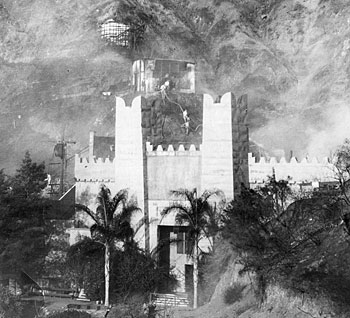
The original Ford was destroyed in this October 24, 1929 brushfire. Photo/Herald Examiner Collection, L.A. Public Library
In addition, with $28.5 million in additional funding recently approved as part of the county’s supplemental budget, the scope of the construction has broadened to include soundwalls to buffer the noise from the 101 Freeway, an expansive terrace where up to 200 people can enjoy pre-concert picnics, and a two-level structure with a new concession area on the first floor and offices for the Ford staff above.
“By combining the previously approved work with the new projects, we will be able to save several millions of dollars in construction costs,” said Laura Zucker, executive director of the Los Angeles County Arts Commission, which operates the Ford.
The current work—including earlier phases that involved developing the master plan and environmental impact report, replacing the amphitheatre’s seats and stripping away yellow paint to reveal its original concrete surface—has a total price tag of nearly $56.6 million.
Still to come in future years, once funding is identified, are a transportation plaza with a three-level parking garage, a restaurant, a 299-seat theatre and a ¾ mile-long hiking trail with majestic views of the Hollywood sign and other vistas.
Beyond new amenities, the work will address some longstanding problems that have plagued the 1,200-seat amphitheatre.
“It’s literally had mudslides going through it,” said Adam Davis, the Ford’s managing director of productions. “It’s kind of been neglected and this project is really going to help.”
The project’s architect, Brenda Levin, whose historic preservation work includes acclaimed projects at the Griffith Observatory, Wilshire Boulevard Temple and Dodger Stadium, said it is impossible to separate the Ford from its unique natural setting on county parkland in the Cahuenga Pass.
“The building itself is set deep into a canyon, and the canyon is very much part of the theatrical experience,” Levin said. “At the Ford you’re focused on the natural landscape, which will be maintained.”
By the time all the work described in the master plan is concluded, the public is likely to see the Ford and its surroundings in a dramatically different light, she said.
“I don’t think at this point that many people would describe the Ford as sitting in the middle of a 32-acre park,” Levin said. “I do think after this project is complete, they will totally understand that.”
Supervisor Zev Yaroslavsky, a longtime backer of the facility since he was elected to the county Board of Supervisors in 1994, said the coming work will be a game-changer for the Ford. “During my tenure we have continually made incremental improvements, but this really takes it to the next level,” he said. Yaroslavsky, who is retiring from the Board of Supervisors later this year, predicted that when the amphitheatre reopens in the summer of 2016, patrons will be in for their “best-ever Ford Theatres experience.”
Over the past two decades, the Ford has forged a unique identity among Los Angeles concert venues through its “partnership program” showcasing local artists, and more recently with its annual “Zev Yaroslavsky Signature Series” that aims to draw new audiences with programming pairing nationally known performers with homegrown talent.
With the Ford closing for construction next summer, plans are underway to bring a series of performances into various communities around the county.
Posted 10/8/14
A tribute big as the Ponderosa
October 9, 2014
After years of navigating enough obstacles to prompt the patriarch on TV’s Bonanza to yell, “What in tarnation is going on down there?” Los Angeles County is poised to finish upgrades at Dan Blocker Beach in Malibu, though on a more modest scale than initially envisioned.
The $5.5-million project at 26200 Pacific Coast Highway included purchasing a sliver of land above the mile-long beach, where a scenic overlook is now being constructed, complete with picnic areas, parking spots and restrooms. The site also will feature, for the first time, a bronze plaque funded by fans and honoring the actor who played Hoss Cartwright on one of the longest-running and most beloved series in television history.
The overlook area will not provide direct access to the beach that bears Blocker’s name. Not only is the bluff extremely steep—30 feet high in some places—but the beach area directly below is too rocky for general use. However, beachgoers can walk onto the sand by entering at more accessible points north or south of the new overlook. Those new access ways also are being improved as part of the project.
The project should be substantially completed in time for a dedication ceremony on Nov. 14.
The late actors Michael Landon and Lorne Greene, who rose to fame as Little Joe and Ben Cartwright on Bonanza, bought and donated the beach to the state of California in 1979.
It was their way of honoring their costar and friend Blocker, after his untimely death at age 43 from a pulmonary embolism following what should have been routine surgery.
The state handed the beach over to the county in 1995.
It was designated “for public park and recreation purposes” but the public didn’t get much of a chance to enjoy it because neither the state nor the county could afford to install amenities.
In 2004, the state Coastal Conservancy awarded the county $700,000 to make the beach more accessible, but that covered only half of the price tag for improvements mandated by the Americans with Disabilities Act and various local zoning codes. The grant ended up being diverted to other, more shovel-ready projects.
Malibu City Council members, frustrated with the slow pace, sought to take over the project in 2011. But the county, which was shouldering the price tag for renovation, refused.
With no safe way to access the beach from the bluff, authorities erected an unsightly chain-link fence that discouraged, rather than encouraged, visitors.
“When we started, the site was empty,” said county Department of Public Works project manager Salim Sioufi, who oversaw the construction. “There was nothing on it.”
“Now, we’re building an area where people can sit and look at the ocean,” he added. “It’s going to be beautiful.”
The county eventually cobbled together funding from various sources, including money from the 3rd Supervisorial District, to build a space offering stunning views of the coast, picnic tables and trash receptacles, restrooms with an underground wastewater treatment system, and a parking lot with 15 spaces.
“The bluffs are very steep, so it was a very difficult place to do construction,” said Carol Baker, public information officer with the Department of Beaches and Harbors.
“We wanted to provide safe, accessible and beautiful open space but we also needed to appropriately address the challenges presented by the natural environment,” she added.
Although Bonanza, which ran for 430 episodes between 1959 and 1972, has long been off the prime time network schedule, it still has legions of fans. So does Blocker, who despite his intimidating physique—6’4”, 300-plus pounds—played the warm but gullible middle Cartwright brother who once mistook diminutive circus performers for leprechauns.
In real life, however, the Texas-born Blocker once worked as an elementary and high school English and drama teacher, and was the only member of the cast with a master’s degree. He also tried to pursue a Ph.D. until acting took up all of his time.
Carla Ledford, 56, has been watching the show ever since she was a child and continues to do so, when she’s not working in marketing for a university in Ohio.
She and fellow fans got the idea for a plaque after struggling to locate Dan Blocker Beach during a visit to Malibu in 2004.
“There was just wasn’t anything there,” Ledford said. “We drove up and down trying to find it when we finally saw a faded lifeguard tower where we could just make out the name ‘Dan Blocker Beach.’ ”
“I mean, it’s a nice beach, but…we just thought it needed something,” she added.
They took up a collection through the fan fiction website Bonanza Legacy and received donations from fans as far away as Australia, England, France, and the Netherlands.
Ledford said because she’s literally been waiting 10 years to see the plaque installed, she’s considering postponing foot surgery and flying from Ohio to California to attend the dedication ceremony.
“I’m seriously thinking about it,” Ledford said.
Posted 10/9/14





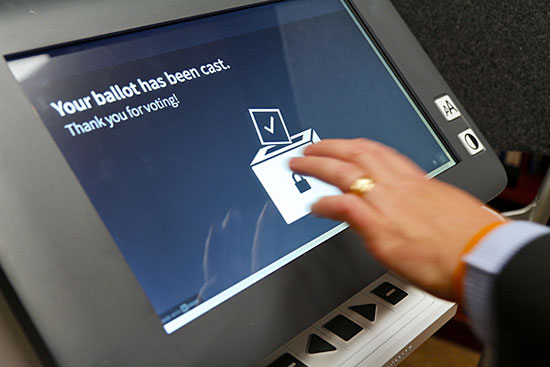


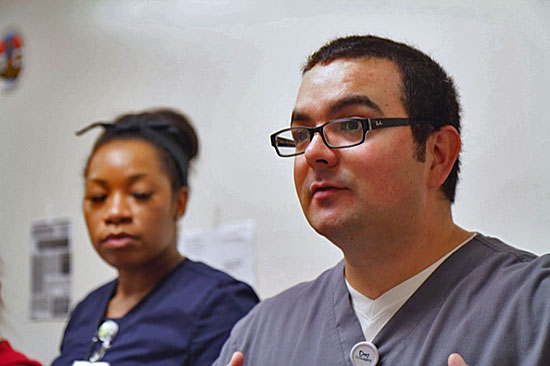

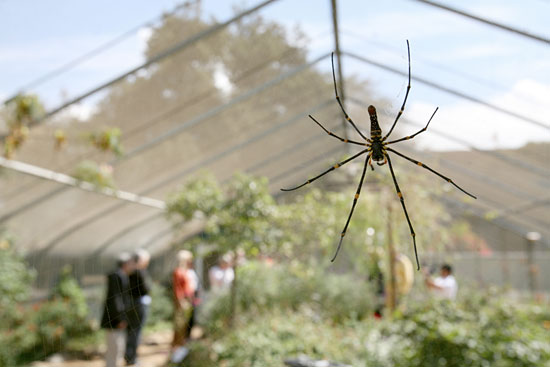
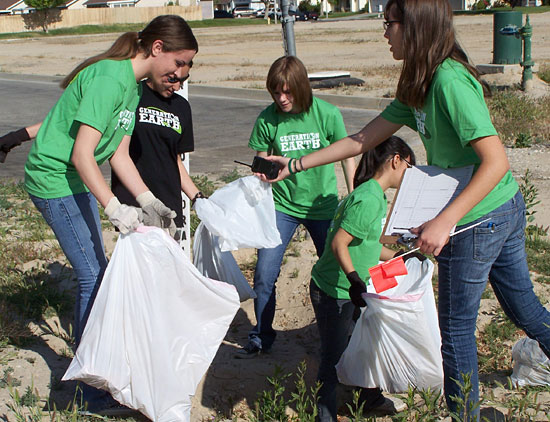

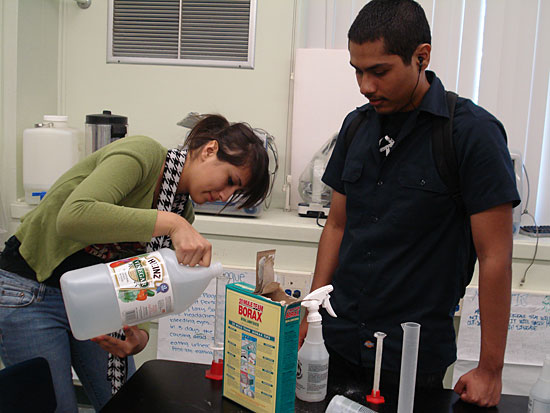
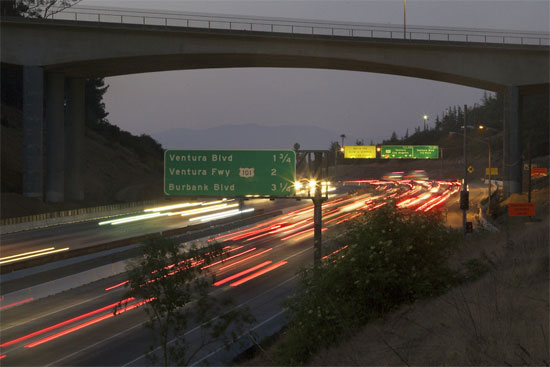

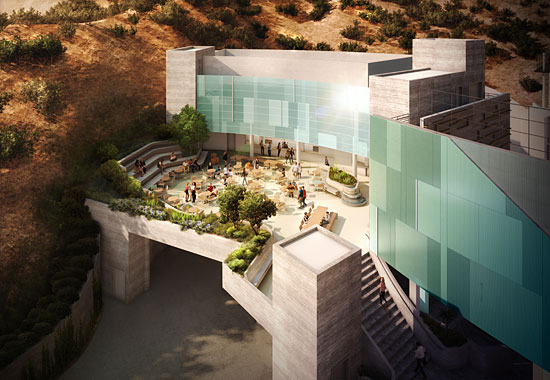
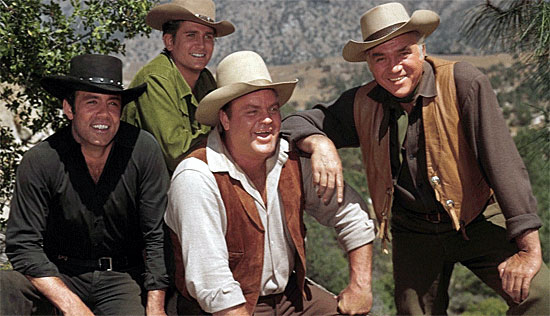






 Check for the latest closure information
Check for the latest closure information








